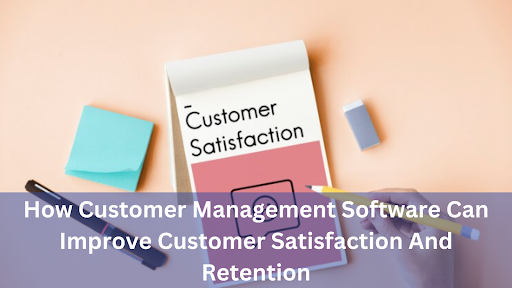- Introduction
- 360-Degree Customer View
- Personalization
- Automated Customer Service
- Analytics and Reporting
- Streamlined Communication
Key Takeaways:
- In the context of customer management software, a 360-degree customer view refers to a comprehensive and holistic understanding of a customer’s interactions, preferences, and behaviours across all touchpoints with a business.
- Personalization is a critical aspect of modern customer management software. By collecting and analyzing data on a customer’s interactions, preferences, and behaviour, businesses can tailor their interactions to the customer’s needs and preferences.
Customer satisfaction and retention are critical factors that determine the success of any business. Happy and loyal customers not only provide repeat business but also act as brand ambassadors, promoting the business to their network. One of the most effective tools to improve customer satisfaction and retention is customer management software. In this blog, we will discuss how customer management software can help businesses improve customer satisfaction and retention.
360-Degree Customer View
In the context of customer management software, a 360-degree customer view refers to a comprehensive and holistic understanding of a customer’s interactions, preferences, and behaviours across all touchpoints with a business. This includes information such as contact details, purchase history, customer support tickets, feedback, and social media activity. By having a complete picture of the customer, businesses can tailor their interactions to the customer’s needs and preferences, leading to better customer satisfaction and retention. A 360-degree customer view also enables businesses to identify trends and patterns in customer behaviour, allowing them to make data-driven decisions to improve their products and services.
Personalization
Personalization is a critical aspect of modern customer management software. By collecting and analyzing data on a customer’s interactions, preferences, and behaviour, businesses can tailor their interactions to the customer’s needs and preferences. For example, a customer management system can use data to suggest products or services that the customer may be interested in, based on their purchase history or browsing behaviour. It can also provide personalized recommendations on how to use a product or service based on the customer’s previous interactions. By providing a personalized experience, businesses can increase customer satisfaction and retention, as well as drive sales and revenue. Personalization is becoming increasingly important in today’s competitive business landscape, and robust customer management software can help businesses stay ahead of the curve.
Automated Customer Service
Automated customer service is one of the key benefits of using customer management software. By automating routine customer service tasks such as responding to frequently asked questions or providing order updates, businesses can free up their staff to focus on more complex customer issues. Additionally, automated customer service can improve response times and provide customers with 24/7 support, which can lead to higher levels of customer satisfaction and retention. Customer management software can also be used to personalize the customer experience by providing tailored product recommendations or targeted marketing messages based on customer behaviour and preferences.
Analytics and Reporting
Analytics and reporting are key features of customer management software that can help businesses gain valuable insights into their customers’ behaviour, preferences, and needs. With analytics and reporting tools, businesses can track and analyze customer interactions across multiple channels, including social media, email, and phone calls, to gain a 360-degree view of their customers. By identifying patterns and trends in customer behaviour, businesses can make informed decisions about how to improve their customer service and marketing efforts. Analytics and reporting can also help businesses measure the success of their customer management strategies and identify areas for improvement.
Streamlined Communication
Streamlined communication refers to the process of ensuring that communication within an organization is efficient, effective, and clear. This involves using the right channels, platforms, and tools to ensure that messages are delivered promptly and accurately to the intended recipients. With the right customer management software, communication can be streamlined by centralizing communication channels, such as email, phone, and chat, in a single platform. This not only simplifies communication but also ensures that all interactions with customers are recorded and easily accessible, enabling customer service representatives to provide personalized and informed responses. Streamlined communication can help organizations to increase customer satisfaction and retention by providing prompt and reliable communication.
In conclusion, customer management software is a powerful tool that can help businesses improve customer satisfaction and retention. By providing a centralized repository for customer data, efficient communication channels, streamlined sales processes, personalization, and data analytics capabilities, businesses can enhance the customer experience and build strong, long-lasting relationships with their customers.
We’d Love To Hear From You!
Drive Business Growth with Nuraltech
Empower your sales, distribution & analytics with data-driven SaaS solutions.
Schedule a Demo





